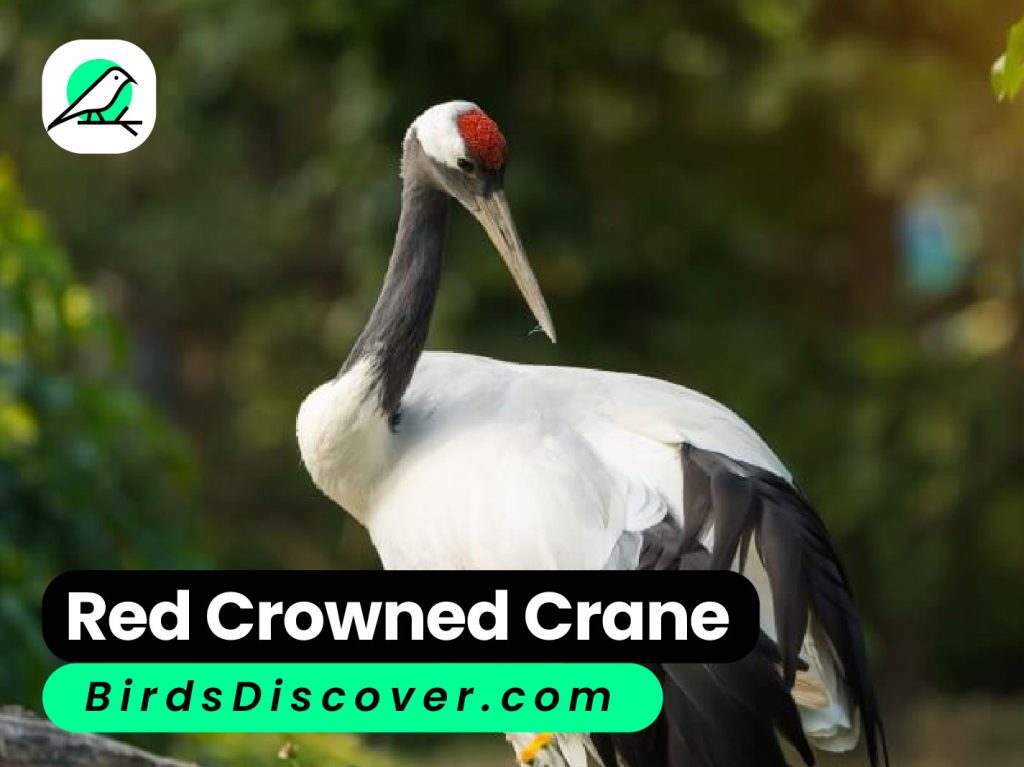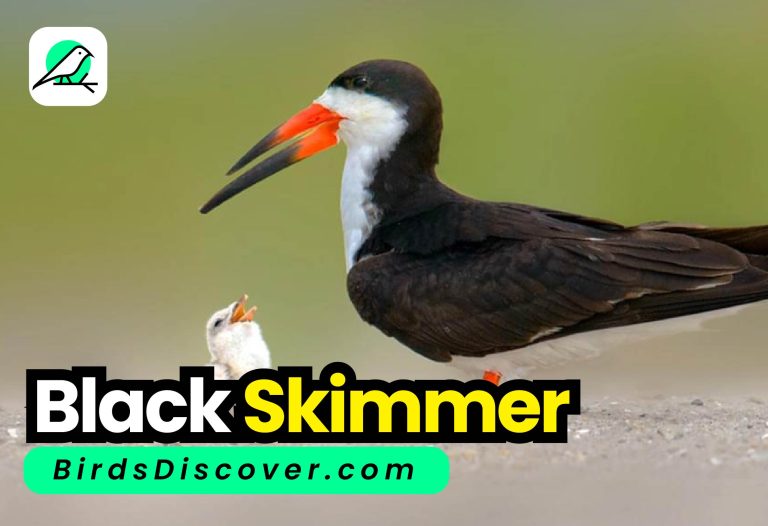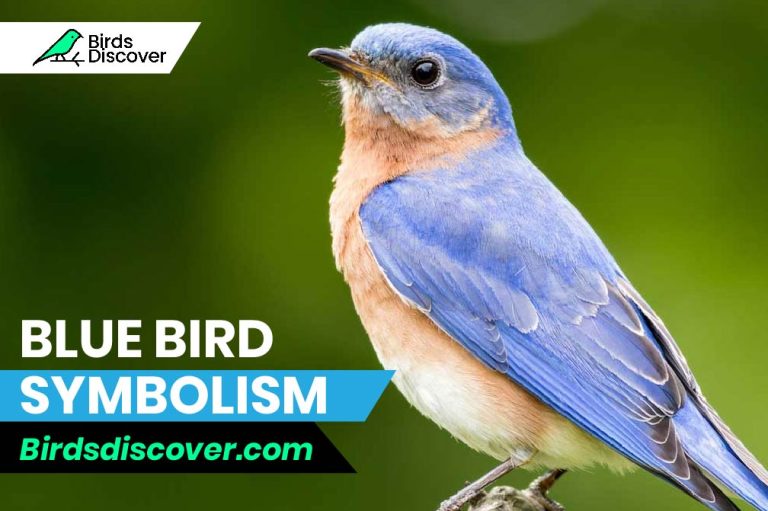10 Amazing Birds With Long Tail Feathers

Birds With Long Tail Feathers
Birds with long tail feathers exhibit remarkable adaptations and striking beauty. From the elegant Red-billed Tropicbird soaring over tropical seas to the acrobatic Long-tailed Manakin performing intricate courtship dances, these avian marvels captivate with their grace and allure. Their elongated tails serve various purposes, from aerial maneuverability to courtship displays, showcasing nature’s ingenuity.
1.Resplendent Quetzal
The Resplendent Quetzal, revered in Mayan and Aztec cultures, is a symbol of freedom and beauty. With iridescent green plumage and long tail feathers, it epitomizes the splendor of the tropical cloud forests.

Resplendent Quetzal: Iconic bird of Central America with iridescent green plumage and long tail feathers.
Resplendent Quetzal: Native to the cloud forests of Central America.
Resplendent Quetzal: Medium-sized bird, approximately 35-40 centimeters (14-16 inches) in length.
Resplendent Quetzal Biography
| Aspect | Information |
| Species Name | Resplendent Quetzal |
| Scientific Name | Pharomachrus mocinno |
| Country | Africa, including Guatemala and Costa Rica |
| Number of Eggs | Typically2eggsinaclutch |
| Incubation Period for Eggs | Approximately 18 to 19 days |
| Diet | Africa, including countries like Guatemala and Costa Rica |
| Habitat | Montane cloud forests and temperate rainforests |
| Migration (yes or no) | Generally resident, with altitudinal migrations |
| Body Size | Approximately 13 to 16 inches (33 to 40 cm) |
| Body Weight | About 4.2 to 6.5 ounces (120 to 185 grams) |
| Dangerous for Humans | Not dangerous to humans |
| Maximum Flight Height | Typically seen flying or perching in the canopy of cloud forests |
| Weather | Conditions, often seen in montane forests |
| Birds (yes or no) | Yes, it’s a bird |
2.Long Tailed Widowbird
The Long-tailed Widowbird, native to Africa’s grasslands, is known for its striking breeding plumage. Males sport long, black tail feathers, up to half a meter in length, which they display in elaborate aerial courtship displays. These avian acrobats captivate with their agility and dazzling aerial performances during mating season.

Long-tailed Widowbird: Known for its extravagant breeding plumage and remarkable aerial courtship displays.
Long-tailed Widowbird: Approximately 20-25 centimeters (8-10 inches) in length, with males possessing tail feathers extending up to 50 centimeters (20 inches) during breeding season.
Long Tailed Widowbird Biography
| Aspect | Information |
|---|---|
| Species Name | Long-tailed Widowbird |
| Scientific Name | Euplectes progne |
| Country | Varies across sub-Saharan Africa |
| Number of Eggs | Typically 2-4 eggs |
| Incubation Period for Eggs | Approximately 11-12 days |
| Diet | Seeds, insects, and small invertebrates |
| Habitat | Grasslands and savannas |
| Migration (yes or no) | Non-migratory, mostly sedentary |
| Body Size | Approximately 20 cm (8 inches) |
| Body Weight | Males: around 42 grams; Females: around 28 grams |
| Dangerous for Humans | No known threats to humans |
| Maximum Flight Height | Typically low-level flights, exact height may vary |
| Weather | Prefers warm and dry weather, adapted to varying conditions |
| Birds (yes or no) | Yes |
| Total Types | Various species within the genus Euplectes |
| Total Color | Male: Black with iridescent blue and red markings; Female: Brown with streaks |
3.Superb Lyrebird
The Superb Lyrebird, native to Australia, is a master of mimicry and renowned for its elaborate tail display. Males boast elegant lyre-shaped plumes, while their rich vocal repertoire imitates a myriad of sounds, from chainsaws to car alarms. These remarkable birds embody the enchantment of Australia’s ancient forests.

Superb Lyrebird Known for its exceptional mimicry skills, elaborate tail display, and inhabiting the dense forests of southeastern Australia.
Superb Lyrebird Large-sized passerine bird, with males reaching up to 100 centimeters (39 inches) in length, including their iconic long tail feathers.
Superb Lyrebird Biography
| Aspect | Information |
|---|---|
| Species Name | Superb Lyrebird |
| Scientific Name | Menura novaehollandiae |
| Country | Australia |
| Number of Eggs | 1 |
| Incubation Period for Eggs | Approximately 50 days |
| Diet | Insects, small vertebrates, seeds, and fruits |
| Habitat | Dense forests and rainforests of southeastern Australia |
| Migration (yes or no) | No |
| Body Size | 80 to 100 cm (including the tail) |
| Body Weight | 800 to 1200 grams |
| Dangerous for Humans | No |
| Maximum Flight Height | Primarily ground-dwelling, limited flight capability |
| Weather | Prefers mild and wet climates |
| Birds (yes or no) | Yes |
| Total Types | One |
| Total Color | Males: Shiny black with silver and brown plumage, Females: Brown with lighter spots |
4.Peacock
The Peacock, a symbol of beauty and elegance, boasts extravagant plumage adorned with iridescent hues of blue and green. Males flaunt their stunning tail feathers, or “train,” in elaborate courtship displays to attract females. Revered across cultures, these majestic birds embody grace and splendor in their natural habitat.

Peacock: Known for its vibrant and iridescent plumage, ornate train feathers, and majestic courtship displays.
Peacock: Large-sized bird, with males reaching lengths of up to 100-130 centimeters (39-51 inches), including their impressive tail feathers.
Peacock Biography
| Aspect | Information |
|---|---|
| Species Name | Peacock |
| Scientific Name | Pavo cristatus |
| Country | Native to South Asia, but also introduced in other regions |
| Number of Eggs | 4-8 eggs per clutch |
| Incubation Period for Eggs | Approximately 28 days |
| Diet | Omnivorous, eats seeds, insects, fruits, and small animals |
| Habitat | Forests, grasslands, and near water sources |
| Migration (yes or no) | No |
| Body Size | Male: 100-120 cm; Female: Smaller than males |
| Body Weight | Male: 4-6 kg; Female: 2.75-4 kg |
| Dangerous for Humans | Generally not dangerous, but males can be aggressive during mating season |
| Maximum Flight Height | Peacocks are not strong fliers, mostly prefer short flights |
| Weather | Well adapted to various climates, but prefer warmer regions |
| Birds (yes or no) | Yes, peafowl includes males (peacocks) and females (peahens) |
| Total Types | Three main types: Indian Peafowl, Green Peafowl, and Congo Peafowl |
| Total Color | Iridescent blues, greens, and browns in males; more subdued colors in females |
5.Red Crowned Crane
The Red-crowned Crane, an emblem of longevity and fidelity in East Asian culture, inhabits wetlands and grasslands. With its graceful stature and striking red crown, it captivates observers. Endangered due to habitat loss, conservation efforts aim to preserve this iconic symbol of beauty and cultural significance.

Red-crowned Crane Known for its elegant appearance, with a striking red crown atop its head, and revered as a symbol of longevity and fidelity in East Asian culture.
Red-crowned Crane One of the largest crane species, with adults standing approximately 1.5 meters (5 feet) tall, with a wingspan reaching up to 2.5 meters (8 feet).
Red Crowned Crane Biography
| Aspect | Information |
|---|---|
| Species Name | Red-crowned Crane |
| Scientific Name | Grus japonensis |
| Country | Various (Asia, Russia) |
| Number of Eggs | 2 |
| Incubation Period for Eggs | Approximately 30 days |
| Diet | Omnivorous (plants, insects, small animals) |
| Habitat | Wetlands, marshes, rivers |
| Migration (yes or no) | Yes |
| Body Size | Large |
| Body Weight | 4.5 to 6.3 kg |
| Dangerous for Humans | Generally not dangerous, but can be territorial during breeding season |
| Maximum Flight Height | 10,000 feet (3,000 meters) |
| Weather | Cold regions, can endure harsh winter conditions |
| Birds (yes or no) | Yes |
| Total Types | 1 |
| Total Color | White with red crown on head |
6.Indian Paradise Flycatcher
The Indian Paradise Flycatcher, with its ethereal beauty, enchants with its long, trailing tail feathers and graceful aerial displays. Found across the Indian subcontinent, this migratory bird symbolizes exoticism and elegance. Its flowing white plumage and dramatic courtship dances evoke a sense of wonder in nature enthusiasts and birdwatchers alike.

Indian Paradise Flycatcher Known for its stunning long, trailing tail feathers, graceful aerial displays, and widespread distribution across the Indian subcontinent.
Indian Paradise Flycatcher Approximately 19-22 centimeters (7.5-8.7 inches) in length, with males possessing long tail feathers extending up to 20-30 centimeters (7.9-11.8 inches) during the breeding season.
Indian Paradise Flycatcher Biography
| Aspect | Information |
|---|---|
| Species Name | Indian Paradise Flycatcher |
| Scientific Name | Terpsiphone paradisi |
| Country | India, Southeast Asia |
| Number of Eggs | 2 |
| Incubation Period for Eggs | Approximately 12-14 days |
| Diet | Insects, especially flying ones |
| Habitat | Forests, woodlands, gardens |
| Migration (yes or no) | Partial migrant |
| Body Size | Small |
| Body Weight | 11-15 grams (approx.) |
| Dangerous for Humans | No |
| Maximum Flight Height | Up to 30 meters |
| Weather | Prefers tropical climates |
| Birds (yes or no) | Yes |
| Total Types | Several subspecies |
| Total Color | Male: White with long tail streamers, Female: Rufous with short tail streamers |
7.African Paradise Flycatcher
The African Paradise Flycatcher, found in sub-Saharan Africa, dazzles with its vibrant plumage and elegant long tail feathers. Males display striking variations of red, chestnut, or white plumage during breeding season. Known for its agile flight and melodious calls, this bird embodies the allure of Africa’s diverse ecosystems.

African Paradise Flycatcher Known for its vibrant plumage, including striking variations of red, chestnut, or white, and for its agile flight and melodious calls across sub-Saharan Africa.
African Paradise Flycatcher: Length 17-19 cm, tail feathers up to 30 cm.
African Paradise Flycatcher Biography
| Aspect | Information |
|---|---|
| Species Name | African Paradise Flycatcher |
| Scientific Name | Terpsiphone viridis |
| Country | Various countries in Africa |
| Number of Eggs | 2 to 4 |
| Incubation Period for Eggs | Approximately 14 days |
| Diet | Insects, especially flying ones |
| Habitat | Woodlands, savannas, gardens |
| Migration (yes or no) | Partial migrant |
| Body Size | Small |
| Body Weight | 13 to 17 grams |
| Dangerous for Humans | Not dangerous |
| Maximum Flight Height | Up to 30 meters |
| Weather | Prefers warm climates |
| Birds (yes or no) | Yes |
| Total Types | Several subspecies |
| Total Color | Vivid colors, including blue, white, and red |
8.Wilson’s Bird of Paradise
Wilson’s Bird of Paradise, endemic to Indonesia, is famed for its mesmerizing courtship display. Males exhibit vibrant plumage and intricate dance routines to attract mates. Found in the remote rainforests of Papua, their iridescent colors and elaborate rituals epitomize the enchantment of tropical biodiversity, captivating birdwatchers and researchers alike.

Wilson’s Bird of Paradise Known for its vibrant plumage and elaborate courtship display.
Wilson’s Bird of Paradise Small-sized bird, approximately 15-18 centimeters (6-7 inches) in length.
Wilson’s Bird of Paradise Endemic to the rainforests of Waigeo and Batanta islands in West Papua, Indonesia.
Wilson’s Bird of Paradise Biography
| Aspect | Information |
|---|---|
| Species Name | Wilson’s Bird-of-Paradise |
| Scientific Name | Cicinnurus respublica |
| Country | Indonesia |
| Number of Eggs | 1-2 |
| Incubation Period for Eggs | Approximately 18 days |
| Diet | Insects, fruits, and arthropods |
| Habitat | Lowland rainforests |
| Migration (yes or no) | No |
| Body Size | Small |
| Body Weight | About 50 grams |
| Dangerous for Humans | No |
| Maximum Flight Height | Not well-documented |
| Weather | Tropical climate |
| Birds (yes or no) | Yes (other bird species) |
| Total Types | About 50 species |
| Total Color | Males: Vibrant colors; Females: Brown |
9.Long Tailed Manakin
The Long-tailed Manakin, native to Central and South America, captivates with its vibrant plumage and intricate courtship displays. Males perform synchronized dances in “lekking” grounds to attract mates. Found in tropical forests, these charismatic birds symbolize the beauty and biodiversity of their lush habitats, delighting birdwatchers worldwide.

Long-tailed Manakin Known for its vibrant plumage, intricate courtship displays, and synchronized dances to attract mates.
Long-tailed Manakin Compact bird, measuring approximately 10-12 centimeters (4-5 inches) in length.
Long Tailed Manakin Biography
| Aspect | Information |
|---|---|
| Species Name | Long-tailed Manakin |
| Scientific Name | Chiroxiphia linearis |
| Country | Found in Central and South America |
| Number of Eggs | Typically 2 eggs |
| Incubation Period for Eggs | About 18 days |
| Diet | Fruits, insects, and small arthropods |
| Habitat | Tropical rainforests and wooded areas |
| Migration | No |
| Body Size | Small |
| Body Weight | About 15-20 grams |
| Dangerous for Humans | No |
| Maximum Flight Height | Can vary, generally low |
| Weather | Prefers warm and humid climates |
| Birds | Yes |
| Total Types | Varies |
| Total Color | Vibrant colors, including green, black, and red |
10.Greater Bird of Paradise
The Greater Bird-of-Paradise, native to New Guinea, is renowned for its stunning plumage and elaborate courtship rituals. Males display vibrant colors and intricate dances on traditional display perches, mesmerizing females. Found in tropical rainforests, these iconic birds symbolize the splendor of biodiversity and captivate with their exotic allure.

Greater Bird-of-Paradise Known for its stunning plumage, elaborate courtship rituals, and mesmerizing dances to attract mates.
Greater Bird-of-Paradise: Measures approximately 43-48 centimeters (17-19 inches) in length, with males being larger than females.
Greater Bird of Paradise Biography
| Aspect | Information |
|---|---|
| Species Name | Greater Bird-of-Paradise |
| Scientific Name | Paradisaea apoda |
| Country | Found in New Guinea and nearby islands |
| Number of Eggs | Typically 1 to 2 |
| Incubation Period for Eggs | Approximately 18 days |
| Diet | Fruits, insects, and arthropods |
| Habitat | Rainforests and lowland forests |
| Migration (yes or no) | No |
| Body Size | Approximately 33 to 43 cm |
| Body Weight | Around 250 to 430 grams |
| Dangerous for Humans | No |
| Maximum Flight Height | Information not readily available |
| Weather | Prefers tropical climates |
| Birds (yes or no) | Yes |
| Total Types | Multiple species within the genus Paradisaea |
| Total Color | Vibrant colors, including iridescent feathers |
Conclusion
In conclusion, the world of avian beauty is enriched by the presence of these extraordinary birds with long tail feathers. From the resplendent peacock to the elegant lyrebird, each species captivates with its unique charm and remarkable adaptations. Their graceful displays and vibrant plumage remind us of the endless wonders of nature.
FAQS
Which bird has the longest tail feathers?
The Ribbon-tailed Astrapia boasts the longest tail feathers, reaching up to a meter in length.
Where can I find the Long-tailed Manakin?
Long-tailed Manakins are found in the tropical forests of Central and South America.
What is the symbolic significance of the peacock?
The peacock symbolizes beauty, elegance, and resurrection in various cultures across the world.
How do male birds use their long tail feathers?
Male birds use their long tail feathers for courtship displays, attracting mates through elaborate dances and displays.
Are any of these birds endangered?
Yes, some of these birds, like the Red-crowned Crane and the Greater Bird-of-Paradise, are classified as endangered.







